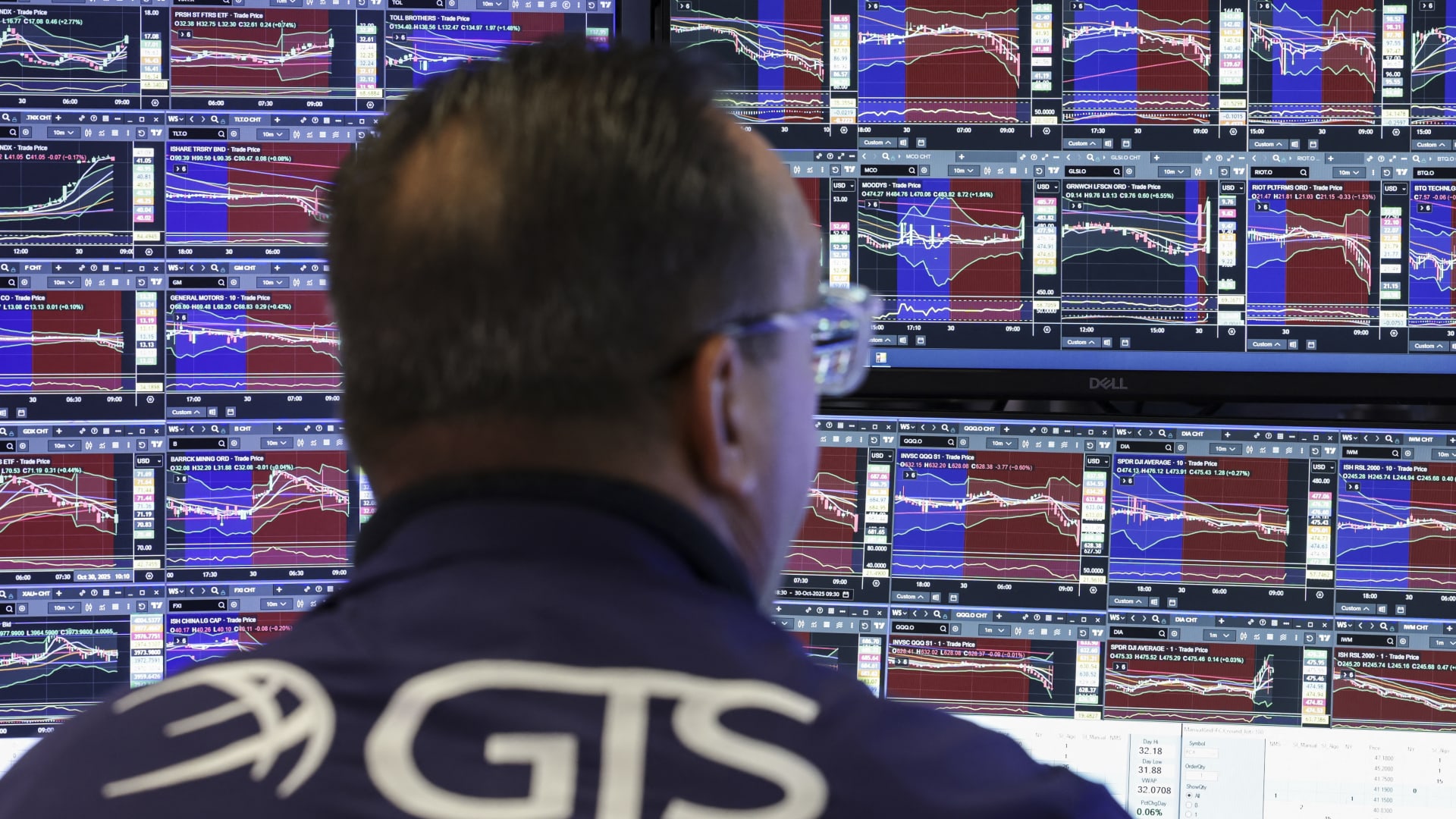Lock it in or let it ride? It’s a question that investors might ponder at this point in an unexpectedly rewarding year, as the calendar pivots appropriately from the season of feigned fright to one of gratitude for life’s bounty. For most people, this is less about getting fully out of or staying wholly in equities, but it’s a moment to set expectations and perhaps portfolios in recognition of the distance traveled to date. The S & P 500 is up 16.3% this year to 6,840, which is almost exactly 2,000 points higher than its intraday low at the depths of the tariff panic on April 7. With dividends, it’s delivered more than 17%. Even the staid 60/40 stock-bond portfolio, as represented by the Vanguard Balanced Index Fund, has logged a total return of 13.1% this year, trouncing its long-term average just above 8%. On a three-year trailing basis — dating back to the end of the 2022 bear market and just ahead of the launch of ChatGPT — the S & P 500 has delivered an annualized total return of 22.8%. This is better than 90% of all three-year periods back to 1945, according to Strategas Group. .SPX YTD mountain S & P 500, YTD What tended to happen afterward when three-year gains hit the top decile? Over the ensuing six months, forward returns were slightly better than average, though the average return starts to lag over one- and two-year lookahead periods. The present rally has also been uncommonly steady and uninterrupted by jarring pullbacks. The S & P 500 has gone some 130 trading days since the last 5% setback ended in April. That places it among the half-dozen longest such streaks without a 5% drop of the past four decades, according to investment analyst and blogger Urban Carmel. Which suggests the clock is ticking at least faintly on this orderly advance — though the longest such run lasted more than twice as long as this one has. And the first 5% pullback, whenever it comes, has typically not marked the ultimate top of a bull market; usually it’s bought for at least a final upward move. The current hot streak is, of course, now at the entry point of the best seasonal window of the year, on average. Keith Lerner, CIO at Truist Wealth, notes that out of 21 times when the S & P 500 has been up more than 15% through October, it was positive the remainder of the year all but once, with an average further gain of 4.7%. What happens if AI trade cools? Part of the story here is the way the market’s concentrated and persistent leadership in mega-cap tech and other quality-growth names has flattered the S & P 500 beyond most other broad benchmarks or active portfolios. The passive S & P 500 index fund is again outperforming more than 70% of all large-cap mutual funds this year. And owners of such an index benefit from the way these funds inherently let the winners run. If given the 500 stocks in the index to manage actively, would most people let Nvidia grow to an 8.5% position without selling a share, or allow the seven heftiest holdings to expand to 35% of the account? A year ago, rotating into the equal-weighted was a trendy call. But while that more balanced approach has done fine and is still in an uptrend, its 8.7% total return this year is just over half that of the market-cap-weighted version. Of course, market character can change and a downswing in the AI trade would more acutely damage the index than to a less-concentrated portfolio, as happened in 2022 when the Nasdaq 100 tumbled almost 30% from peak to trough. Jason Hunter, chef technical strategist at JP Morgan, lays out the setup: “The contrasting performance of the bullishly trending cap-weighted S & P 500 and stagnant, equally weighted S & P 500 Index since mid-summer also helps illustrate the high dispersion within the index and associated crowding in the thin leadership.” He adds, “momentum indicators on the daily and weekly timeframes are not confirming the new highs. All of the above are indications of rally exhaustion, but they are also conditions that have been in place on many occasions throughout the evolution of the rally in recent quarters, which have had little to no impact most of the time.” As has been the case with some frequency, last week’s action was less impressive below the surface. The equal-weight S & P 500 was down 1.75% and lagged the main index by 2.5 percentage points. And each of the key threads of the bullish narrative frayed just a bit: The Federal Reserve cut rates a quarter-point but sought to cast doubt on another reduction in December, with homebuilder, regional-bank and retail stocks suffering in reaction. The trade summit with China yielded a tepid truce rather than breakthrough deal. And while Magnificent 7 earnings were unassailably strong and capex intentions lifted, the market responded stingily to Meta Platforms (down 12%) and Microsoft (off 1%). It’s fair to withhold style points for such uneven rhythms, but Tony Pasquariello, Goldman Sachs head of hedge-fund coverage, gives voice to a sort of market-breadth agnosticism: “Has the recent rally been particularly narrow? Yes. Is S & P a very top-heavy index? Yes. Is this a meaningful departure from the regime that has totally dominated the past three years? No. Does this history book tell us that highly concentrated markets have to end badly? No.” All points are well taken, and along with most broad assessments of the landscape they argue for giving the market the benefit of the doubt over the immediate horizon. While not losing sight, of course, of the way the march higher has compressed some risk-absorbing cushions along the way. What the ‘hyperscaler’ earnings showed Meta, for instance, can effortlessly afford the additional $30 billion in debt it issued last week to help fund its AI ambitions. But more broadly, this data-center buildout is coming to rely increasingly on leverage than spare cash. The Fed, meantime, is halting the runoff of its balance sheet in part because overnight money markets have started to show signs of intermittent tightness. And investor sentiment has turned more aggressive, if not alarmingly so. Here we see the ratio of bulls to bears in the Investors Intelligence survey of market advisory services popping above the “excessive optimism” threshold after months of residual caution following the April selloff. Note that it can stay elevated like this for a while with little payback in the market, as it did last year, but fair to say this is no longer a truly “hated rally.” The prevailing takeaway from the “hyperscaler” quarterly results was that they still feel they don’t have enough computing capacity to meet demand. Nvidia shares gained almost 9% last week, enlarging its market value by $400 billion, and accounting for most of the S & P 500’s net gain. The correction in Meta shares showed that the Street trusts the company less or perceives its strategy as more desperate and less certain than its peers. For now, though, the market is willing largely to accept the way the massive cloud and social-media players are funneling what would otherwise be their free cash flow to Nvidia and other AI infrastructure vendors. Here’s the free-cash-flow yield of the four big spenders, crashing to or below 2%. How quickly the standard investment case for these companies turned from “asset-light cash machines” to “builders of the physical future of computing.” As with so many attributes of the current environment, this shows a remarkable level of investor fortitude and “informed greed,” underwriting the market’s resilience amid macro flux and bubble anxiety – a collective willingness to let it ride, for at least a bit longer.





